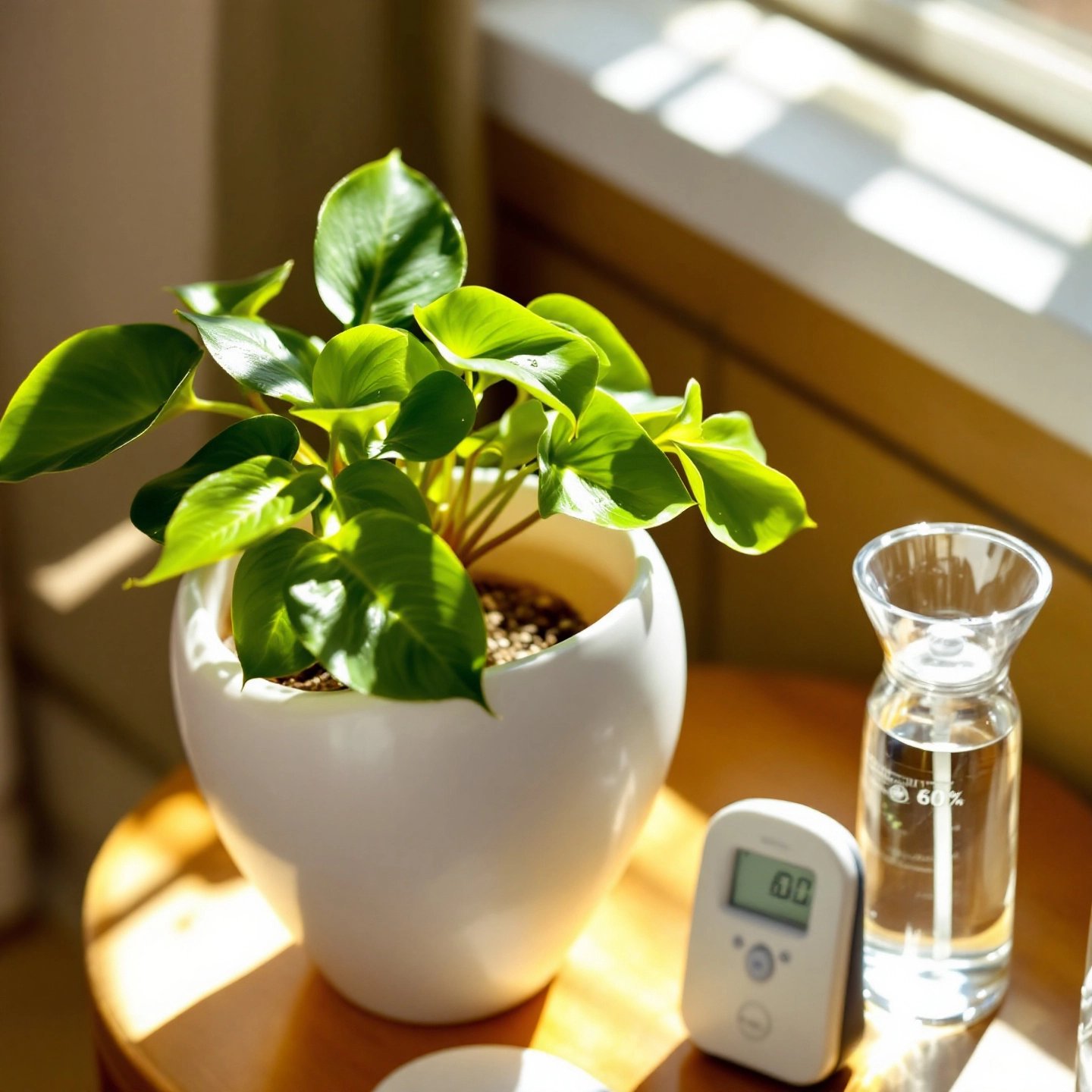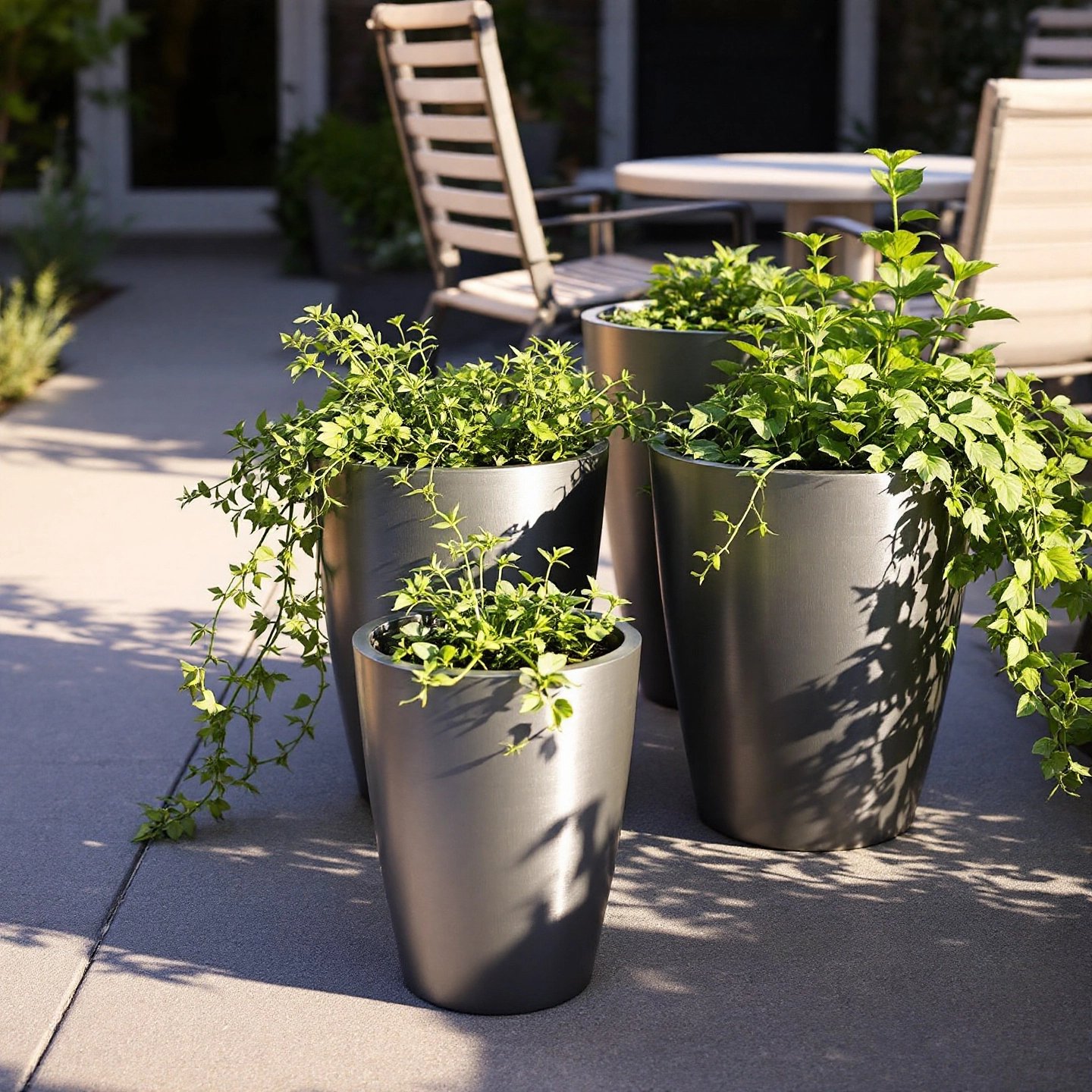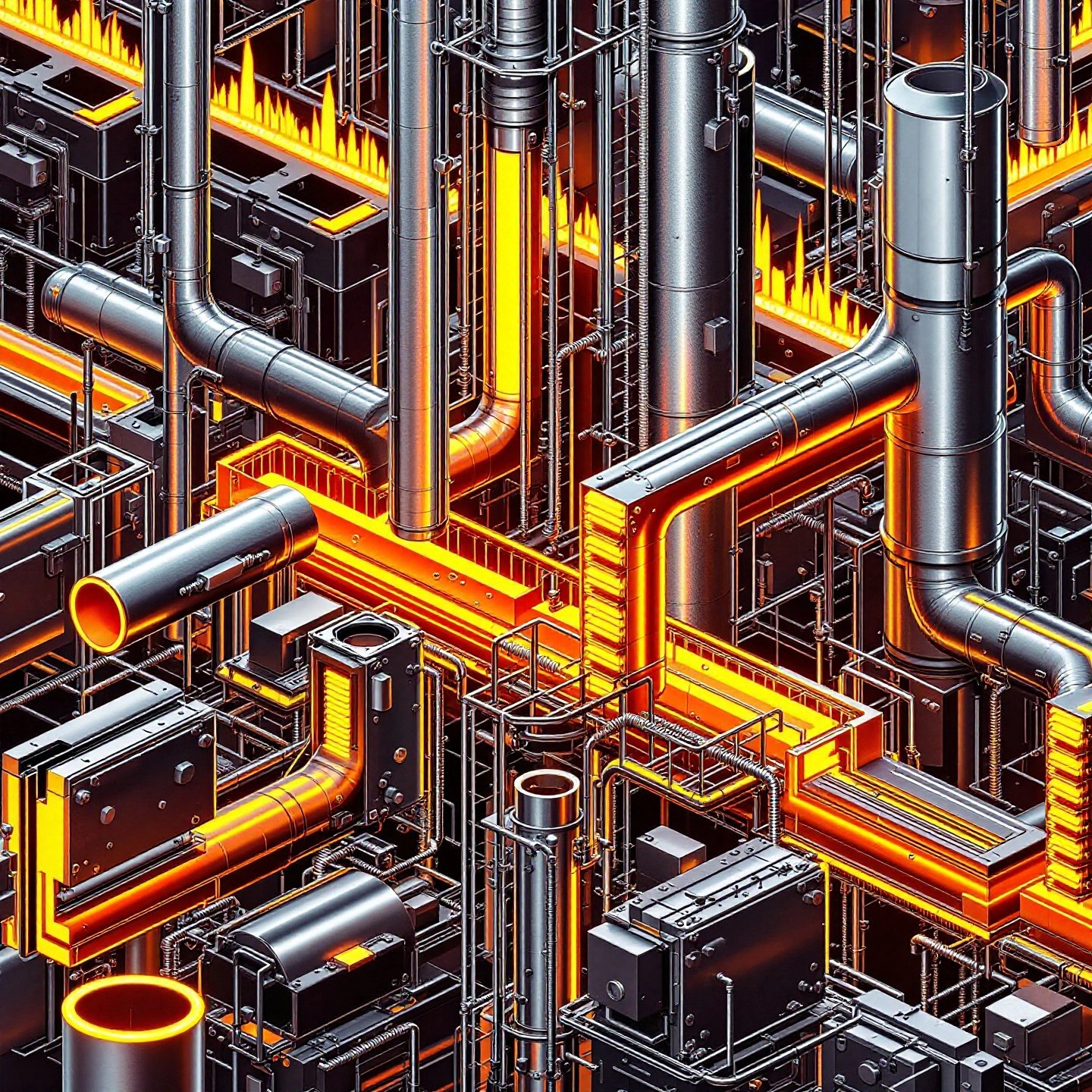
Did you know the term "aluminum plant" describes both a striking houseplant and industrial manufacturing hubs? This dual meaning creates an intriguing connection between nature and industry, both united by metallic visual appeal.
Native to Vietnam's tropical forests, the Pilea aluminum plant (Pilea cadierei) captivates with its coin-shaped leaves featuring silver splashes resembling hand-painted aluminum accents. This compact perennial grows 12-18" tall, making it ideal for tabletops and terrariums. Its metallic patterns result from specialized leaf cells that reflect light differently than surrounding green tissue.
In factories worldwide, aluminum plant facilities transform raw bauxite into versatile metal through processes like extrusion and casting. These industrial complexes share the "aluminum" name due to their production of silvery metal sheets and components used in everything from soda cans to spacecraft.
Both interpretations of "aluminum plant" derive their names from visual characteristics:
As we explore care techniques for Pilea cadierei and production methods in aluminum factories, you'll discover surprising parallels between nurturing living plants and engineering durable metal solutions.
Whether you're a plant enthusiast or an industry professional, the term "aluminum plant" holds dual significance. Let's unpack both interpretations and discover what connects a tropical houseplant to massive manufacturing complexes.
Native to Vietnam's tropical forests, the Pilea cadierei earns its metallic moniker through extraordinary foliage. Key characteristics include:
This evergreen perennial's reflective leaf surfaces result from specialized cells that scatter light differently than surrounding green tissue, creating its signature metallic appearance.
At the opposite end of the scale, industrial aluminum plants transform raw bauxite ore into usable metal through processes like:
These facilities produce the silvery metal used in everything from beverage cans to aerospace components.
Both interpretations share a visual kinship with aluminum's distinctive luster:
| Feature | Pilea Cadierei | Industrial Plant |
|---|---|---|
| Primary Association | Botanical | Manufacturing |
| Visual Signature | Silver leaf variegation | Shiny metal products |
| Size Range | 6-18" tall | Multi-acre complexes |
While their scales differ enormously, both aluminum plants captivate through metallic displays—one through natural leaf patterns, the other through engineered metal surfaces. This shared visual language explains their common naming convention, bridging the organic and industrial worlds.
Ready to help your Pilea thrive? Up next, we'll explore essential care strategies to maintain its metallic brilliance indoors.

How do you keep your aluminum plant's metallic leaves shining and prevent common issues like brown tips? With simple yet specific care strategies, you can maintain this tropical beauty's vibrant appearance. Here's your complete maintenance playbook.
Master these four elements for healthy Pilea cadierei growth:
Pro Tip: Use room-temperature filtered water to prevent mineral deposits on leaves.
Combat crispy leaf edges with these methods:
| Method | Frequency | Effectiveness |
|---|---|---|
| Pebble trays | Continuous | +15% humidity |
| Misting | 2-3x/week | +20% temporarily |
| Humidifier | Daily use | +30-40% consistently |
Quick-reference guide for aluminum plant problems:
| Issue | Causes | Solutions |
|---|---|---|
| Brown leaf tips | Low humidity/chemicals in water | Use distilled water + increase moisture |
| Leggy stems | Insufficient light | Move within 3 ft of bright window |
| Yellow leaves | Overwatering | Let soil dry completely before watering |
While not fully aquatic, Pilea cadierei works well in paludarium setups with:
Rotate plants weekly if using grow lights to prevent uneven growth. For soil-grown specimens, repot every 2 years in spring using well-draining mix.
Ready to optimize your plant's environment? Next, we'll explore how aluminum sulfate can enhance soil conditions for even healthier growth.
Are your hydrangeas refusing to turn blue or acid-loving plants struggling in alkaline soil? Aluminum sulfate offers a targeted solution for lowering soil pH, but it requires precise application. Let's explore how this soil amendment works and how to use it effectively without harming your plants.
Aluminum sulfate (Al2(SO4)3) serves two primary purposes:
According to UW-Madison research, it acts faster than elemental sulfur—showing results in weeks rather than months.
| Soil Type | Amount per 100 sq ft | pH Reduction |
|---|---|---|
| Clay | 5 lbs | 0.5-1.0 |
| Sandy | 2.5 lbs | 0.3-0.7 |
For individual plants:
While effective, improper use of aluminum sulfate for plants can cause issues:
Pro Tip: Water thoroughly after application to prevent root burn and distribute compounds evenly.
For sustained pH management:
Remember: Always start with a soil test from your local extension service. Over-application can lead to aluminum toxicity—a particular risk in soils with pH below 5.0. Now that we've optimized soil chemistry, let's explore how aluminum planters can elevate your garden's aesthetics while complementing your plants' needs.

Want planters that combine durability with sleek aesthetics? Aluminum's versatility makes it ideal for both indoor and outdoor design schemes. Let's explore three innovative ways to use these metallic containers while highlighting their practical advantages over traditional materials.
Aluminum planters adapt effortlessly to various styles:
Why choose aluminum over other common planter materials?
According to Gardenista's analysis, aluminum outperforms clay in freeze-thaw resistance and weighs 65% less than cast iron equivalents.
Enhance your decor with these adaptable features:
| Feature | Options | Best Use |
|---|---|---|
| Finishes | Anodized, brushed, powder-coated | Match existing metal fixtures |
| Colors | 50+ RAL shades available | Complement architectural themes |
| Drainage | Integrated trays/overflow ports | Protect indoor surfaces |
Design Hack: Group matching aluminum planter boxes in graduated sizes for visual rhythm on patios.
For apartment dwellers, combine a slim aluminum plant stand with trailing Pilea cadierei to add vertical interest without overwhelming limited space. Outdoors, pair large rectangular planters with ornamental grasses for contemporary curb appeal.
Ready to troubleshoot common plant issues? Next, we'll tackle solutions for leaf discoloration and overgrowth to keep your greenery thriving.
Is your aluminum plant losing its metallic luster or showing signs of distress? Let's troubleshoot three common problems and restore your Pilea cadierei's vitality with targeted solutions.
Yellow or brown leaves often signal environmental stress:
Quick Fix: Wipe leaves monthly with diluted neem oil to enhance photosynthesis and prevent mineral buildup.
These tiny pests thrive in dry indoor conditions. Signs include:
Treatment Protocol:
Keep roots healthy with these measures:
| Risk Factor | Prevention |
|---|---|
| Overwatering | Water only when top 1" soil dries |
| Poor Drainage | Use pots with 3+ drainage holes |
| Compact Soil | Mix in 30% perlite/pumice |
Maintain compact growth and propagate new plants:
This propagation method lets you expand your indoor collection or share plants with friends.
By addressing these issues promptly, your aluminum plant will maintain its signature metallic foliage and bushy form. Next, we'll explore how industrial aluminum facilities transform raw materials into everyday products.

Ever wondered how raw aluminum transforms into precision components for skyscrapers or smartphones? Modern aluminum plants combine advanced engineering with specialized processes to create versatile metal products. Let's examine the key manufacturing stages and innovations driving this industry.
Aluminum extrusion plants like those operated by Sunmay Aluminum use 700-ton presses to force heated aluminum billets through custom dies. This creates:
Sunmay's reverse extrusion technology enables seamless tube production with tolerances tighter than ISO 2867 standards, ideal for hydraulic systems and aerospace applications.
After extrusion, aluminum profiles undergo transformative surface treatments:
| Process | Benefits | Applications |
|---|---|---|
| Anodizing | Corrosion resistance + color options | Architectural façades |
| Powder Coating | Scratch-resistant finishes | Outdoor furniture |
| Wood Grain Sublimation | Aesthetic/texture replication | Interior design elements |
Leading facilities employ specialized alloys and tempers to meet diverse needs:
Industry Insight: Heat treatment can increase 6061 aluminum's yield strength by 29% compared to untreated stock.
With TS16949 and EN755 certifications, manufacturers like Sunmay Aluminum ensure consistent quality across batches while supporting custom architectural projects and industrial automation systems. Their 700mm profile capabilities enable unique designs for curtain walls and solar panel framing systems.
As we've seen, these industrial processes create materials shaping our modern world. Next, we'll examine how aluminum production impacts local communities and global sustainability efforts.
How do aluminum production facilities balance economic growth with environmental responsibility? Let’s examine how major operations like Alcoa Aluminum Plant and Century Aluminum’s Mt. Holly smelter drive community development while advancing sustainable practices.
A 2024 economic study revealed aluminum plants’ substantial local impacts:
When Century Aluminum’s Mt. Holly facility operates at full capacity, its economic impact jumps to $892M annually—enough to fund 12 local schools.
Following aluminum plant fire risks, industry leaders implemented:
| Initiative | Impact |
|---|---|
| Molten Metal Incident Reporting | 35% fewer accidents since 2020 |
| Advanced Fire Suppression Systems | 90% faster response times |
| Worker Safety Certifications | 100+ hours annual training |
The Aluminum Association’s safety guidelines now require regular combustibility testing for all structural alloys.
Modern facilities combine production with environmental stewardship:
Community Insight: Alcoa Aluminum Plant partners with local colleges to fund metallurgy scholarships, creating career pipelines.
As you consider aluminum solutions, remember that responsible providers like Alcoa and Century Aluminum demonstrate how industrial operations can power economies while protecting people and the planet. Next, we’ll help you select technical specifications that align with these community-focused values.
How do you select aluminum materials that balance strength, aesthetics, and environmental responsibility? Let’s break down key technical considerations and surface treatment options to match your project requirements.
| Property | 6061 | 7075 |
|---|---|---|
| Tensile Strength | 310 MPa | 572 MPa |
| Corrosion Resistance | Excellent | Moderate |
| Common Uses | Architectural frames, marine hardware | Aircraft components, high-stress machinery |
| Machinability | Easy | Requires specialized tools |
As shown in Kormax’s analysis, 6061 offers better weldability for structural projects, while 7075 excels in aerospace applications requiring extreme durability.
Modern aluminum finishing plants provide these protective treatments:
Design Tip: Brushed finishes hide scratches better in high-traffic areas compared to polished surfaces.
For specialized aluminum alloy plant solutions, consider providers like Sunmay Aluminum who offer:
Their reverse extrusion technology produces seamless tubes with ±0.05mm tolerances – crucial for hydraulic systems and medical equipment. With six advanced surface treatment lines, they achieve 72-hour salt spray resistance on architectural profiles.
By matching alloy properties and finishes to your operational needs, you ensure durable, cost-effective solutions. Next, we’ll conclude with key takeaways for nurturing both botanical and industrial aluminum success stories.
How can one term bridge the worlds of nature and industry? The aluminum plant embodies this duality perfectly—a tropical stunner with metallic leaves for your living room, and massive facilities producing the metal that shapes modern infrastructure. Both demand careful nurturing: one through attentive plant care, the other through precision engineering.
From low-carbon smelters using hydropower to recyclable aluminum planters, both interpretations now emphasize environmental stewardship. Century Aluminum’s planned Kentucky facility aims to reduce emissions by 75% while creating 6,500+ jobs—proof that industrial progress and ecological responsibility can coexist.
Whether tending to Pilea cadierei’s iridescent leaves or specifying alloys for aerospace projects, success lies in balancing technical precision with adaptive care. As you apply these insights, remember: every silver leaf and anodized beam tells a story of human ingenuity working in harmony with natural beauty.
Yes, Pilea cadierei thrives with bright indirect light and weekly watering. Maintain 65-75°F temperatures and 40-60% humidity for optimal growth. Its compact size (12-18" tall) makes it ideal for tabletops and terrariums.
Brown tips indicate low humidity or mineral buildup. Mist leaves weekly with filtered water and use pebble trays or a humidifier to maintain 50%+ humidity. Trim affected leaves at 45° angles using sterilized scissors.
While not fully aquatic, Pilea cadierei adapts well to paludariums with partially submerged roots. Ensure 68-80°F water temperatures and high ambient humidity (60-90%) for successful semi-aquatic growth.
Modern facilities like Alcoa Aluminum Plant recycle 95% of process water and convert waste into construction materials. Advanced sensors reduce energy use by 18%, while TS16949-certified plants meet strict sustainability standards.
Aluminum sulfate lowers soil pH for acid-loving plants like hydrangeas. Apply 2.5-5 lbs per 100 sq ft depending on soil type, reducing pH by 0.3-1.0 units. Always water thoroughly after application to prevent root burn.
Whatsapp : +8617366266559
Email : sales@sunmayalu.com
Tel : +86 -17366266559
Hi! Click one of our members below to chat on